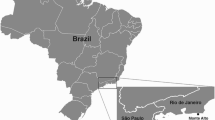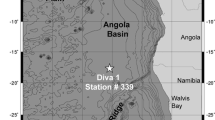Abstract
We describe and illustrate two new species from polar deep seas that belong to a new genus and family. Antipodactidae fam. nov. is characterized by acontia with macrobasic p-amastigophores; this type of nematocyst has never been reported from acontia. Antipodactis gen. nov. is characterized by a column with a distinct scapus and scapulus, cuticle-bearing tenaculi on the scapus, more mesenteries proximally than distally, mesenteries regularly arranged, restricted and reniform retractor musculature, and macrobasic p-amastigophores in the acontia. Antipodactis scotiae sp. nov. and A. awii sp. nov. differ in number of mesenteries, retractor and parietobasilar muscles, cnidae, and geographic distribution. We discuss the familial and generic characters of Antipodactis gen. nov. and its relationship to other families of acontiarian sea anemones: it most closely resembles members of Kadosactidae in terms of anatomy and some aspects of cnidom, and has a cnidom identical to that of Diadumenidae in terms of the types of nematocysts. Because the morphology of nematocysts is critical to the diagnosis of this family, we review and comment on the nomenclature of mastigophores. The macrobasic p-amastigophores of Antipodactidae fam. nov. conform to England’s (Hydrobiologia 216/217:691–697, 1991) definition rather than that of Mariscal (Coelenterate Biology. Academic Press, New York, pp 129–178, 1974).










Similar content being viewed by others
References
Belém MJC, Herrera A, Schlenz E (1996) On Isoaulactinia stelloides (McMurrich, 1889), n. gen., n. comb. (Cnidaria; Actiniaria; Actiniidae). Biociencias 4:77–88
Bergh LS (1947) Bipolar distribution of the organisms and a glacial epoch. In: Bergh LS (ed) Climate and life. Geographgys, Moscow, pp 128–155
Brandt A, De Broyer C, Gooday AJ, Hilbig B, Thomson MRA (2004) Introduction to ANDEEP (Antarctic benthic DEEP-sea biodiversity: colonization history and recent community patterns)—a tribute to Howard L. Sanders. Deep Sea Res Part II Top Stud Oceanogr 51:1457–1465. doi:10.1016/j.dsr2.2004.08.006
Brandt A, Ebbe B, Gooday AJ (2007a) Introduction to ANDEEP, summary and outlook. Deep Sea Res Part II Top Stud Oceanogr 54:1645–1651. doi:10.1016/j.dsr2.2007.07.001
Brandt A, Brix S, Brökeland W, Choudhury M, Kaiser S, Malyutina M (2007b) Deep-sea isopod biodiversity, abundance, and endemism in the Atlantic sector from the ANDEEP I-III expeditions. Deep Sea Res Part II Top Stud Oceanogr 54:1760–1775. doi:10.1016/j.dsr2.2007.07.015
Cairns SD, Bayer FM, Fautin DG (2007) Galatheanthemum profundale (Anthozoa: Actinaria) in the western Atlantic. Bull Mar Sci 80:191–200
Carlgren O (1940) A contribution to the knowledge of the structure and distribution of the cnidae in Anthozoa. Lunds Univ Arskrift 36:1–62
Carlgren O (1942) Actiniaria Part II. Dan Ingolf Exped 5:1–92
Carlgren O (1945) Further contributions to the knowledge of the cnidom in the Anthozoa especially in the Actiniaria. K Fysiogr Sällsk Handl ser NF 56(9):1–24
Carlgren O (1949) A survey of the Ptychodactiaria, Corallimorpharia and Actiniaria. K Svenska Vetenskapsakad Handl ser 4 1(1):1–121
Clarke A, Johnston NM (2003) Antarctic marine benthic diversity. Oceanogr Mar Biol Ann Rev 41:47–114
Cutress CE (1955) An interpretation of the structure and distribution of cnidae in Anthozoa. Syst Zool 4:120–137. doi:10.2307/2411864
Daly M (2004) Anatomy and taxonomy of three species of sea anemones (Cnidaria: Anthozoa: Actiniidae) from the Gulf of California, including Isoaulactina hespervolita Daly, n. sp. Pac Sci 58:377–390. doi:10.1353/psc.2004.0030
Daly M, den Hartog JC (2004) Taxonomy, circumscription and usage in Anthopleura (Cnidaria: Anthozoa: Actiniaria) from the Gulf of Mexico and the Caribbean. Bull Mar Sci 74(2):401–421
Daly M, Chaudhuri A, Gusmão L, Rodríguez E (2008) Phylogenetic relationships among sea anemones (Cnidaria: Anthozoa: Actiniaria). Mol Phy Evol 48:292–301. doi:10.1016/j.ympev.2008.02.022
Dunn DF (1982) Cnidaria. In: Parker SP (ed) Synopsis and classification of living organisms. McGraw-Hill, New York, pp 669–706
England KW (1988) Redefinitions and systematics of Heteractis aurora, the genera Heteractis and Radianthus, and the family Heteractidae (Cnidaria: Actiniaria). Indo-Malayan Zool 5:45–55
England KW (1990) Description of two new mud-dwelling actiniids from Maharashtra, India: Edwardsia athalyei sp. nov. and Acontiactis gen. nov. gokhaleae sp. nov. and a note on Edwardsioides mammillata (Bourne, 1916) (Cnidaria: Actiniaria). Indo-Malayan Zool 6:141–158
England KW (1991) Nematocysts of sea anemones (Actiniaria, Corallimorpharia and Ceriantharia: Cnidaria): nomenclature. Hydrobiologia 216/217:691–697. doi:10.1007/BF00026532
Fautin (2008) Hexacorallians of the World. http://hercules.kgs.ku.edu/hexacoral/anemone2/index.cfm. Accessed Aug 2008
Fautin DG, Eppard RA, Mead RW (1988) Acontiophorum niveum (Cnidaria, Anthozoa), a new species of acontiate sea anemone, with descriptions of actinian families Mimetridiidae and Ramireziidae. Wasmann J Biol 45:26–33
Gabe M (1968) Technique Histologique. Massou et Cie, Paris
Hand C (1956) The sea anemones of Central California. Part III. The Acontiarian Anemones. Wasmann J Biol 13(2):189–319
Johansen DA (1940) Plant microtechniques. McGraw-Hill, New York
Malyutina M, Brandt A (2007) Gurjanopsis australis gen. nov, sp. nov., a new epibenthic deep-sea munnopsid (Crustacea, Isopoda, Munnopsidae) from the Weddell Sea, Southern ocean. Deep Sea Res Part II Top Stud Oceanogr 54:1806–1819. doi:10.1016/j.dsr2.2007.07.008
Manuel RL (1981) British Anthozoa. In: Kermack DM, Barnes RSK (eds) Synopsis of the British fauna 18. Brill EJ/Backhuys Dr W, Leiden, pp 1–241
Mariscal RN (1974) Nematocysts. In: Muscatine L, Lenhoff HM (eds) Coelenterate Biology. Academic Press, New York, pp 129–178
Östman C (2000) A guideline to nematocyst nomenclature and classification, and some note on the systematic value of nematocysts. Sci Mar 64(1):31–46. doi:10.3989/scimar.2000.64s131
Presnell JK, Schreibman MP (1997) Humason’s animal tissue techniques. Johns Hopkins University Press, Baltimore, p 572
Riemann-Zürneck K (1986) Zur Biogeographie des Südwestatlantik mit besonderer Berücksichtigung der Seeanemonen (Coelenterata: Actiniaria). Helgol Meersunters 40:91–149. doi:10.1007/BF01987291
Rodríguez E, López-González PJ (2005) New record of the sea anemone Kadosactis antarctica (Carlgren, 1928): redescription of an Antarctic deep-sea sea anemone, and a discussion of its generic and familiar placement. Helgol Mar Res 59(4):301–309. doi:10.1007/s10152-005-0005-4
Schmidt H (1969) Die Nesselkapseln der Aktinien und ihre differentialdiagnostische Bedeutung. Helgol Wiss Meeresunters 19:284–317. doi:10.1007/BF01625610
Schmidt H (1974) On evolution in the Anthozoa. In: Proceedings of the second international coral Reef Symposium, vol 1. Great Barrier Reef Committee, Brisbane, pp 533–560
Stepanjants SD, Svoboda A, Vervoot W (1996) The problem of bipolarity, with emphasis on the Medusozoa (Cnidaria). Russ Hydrobiol J (special vol):5–34
Stepanjants SD, Svoboda A, Vervoot W (1997) The problem of bipolarity, with emphasis on the Medusozoa (Cnidaria: Anthozoa excepted). In: den Hartog JC (ed) Proceedings of the sixth international conference on coelenterate biology. National Natuurhistorisch Museum, Leiden, pp 455–464
Stepanjants SD, Cortese G, Kruglikova SB, Bjørklund KR (2006) A review of bipolarity concepts: history and examples from Radiolaria and Medusozoa (Cnidaria). Mar Biol Res 2:200–241. doi:10.1080/17451000600781767
Stephenson TA (1928) The British Sea Anemones, vol I. The Ray Society, London, p 148
Watson GM, Wood RL (1988) Colloquium on terminology. In: Hessinger DA, Lenhoff HM (eds) The biology of nematocysts. Academic Press, New York, pp 21–23
Weill R (1934) Contributions à l’étude des cnidaires et de leurs nématocystes. Trav Stn Zool Wimereux 10: 1–347; 11: 347 (sic)-701
Williams RB (1998) Measurements of cnidae from sea anemones (Cnidaria: Actiniaria), II: Further studies of differences amongst sample means and their taxonomic relevance. Sci Mar 62:361–372. doi:10.3989/scimar.1998.62n4361
Williams RB (2000) Measurements of cnidae from sea anemones (Cnidaria: Actiniaria), III: Ranges and other measures of statistical dispersion, their interrelations and taxonomic relevance. Sci Mar 64:49–68. doi:10.3989/scimar.2000.64n149
Acknowledgments
Special thanks to Dr. Joseph Maria Gili (Instituto de Ciencias del Mar, Barcelona), Prof. Wolf Arntz (Alfred Wegener Institute, Bremerhaven), and Prof. Angelika Brandt (Zoological Institut and Zoological Museum, Hamburg), for making possible the participation of ER and PJLG in the Antarctic cruises. Thanks to Mercedes Conradi (Universidad de Sevilla) who collected the Antarctic material that started this manuscript, and to Melanie Bergmann (AWI), who provided the material of A. awii sp. nov. We gratefully acknowledge the officers and crew of the R/V Polarstern, and many colleagues on board during the ANDEEP-I cruise for their valuable assistance. Abby Reft (Ohio State University, Columbus) is thanked for her useful comments on cnidae. Thanks to the reviewers Daphne Fautin, Verena Häussermann, and Nadya Sanamyan whose comments greatly improved this manuscript. Support was provided by a MCT-CSIC grant (I3P-BPD2001-1) to ER, and Spanish CICYT projects: REN2003-04236, REN2001-4269-E, and CGL2004-20141-E. Additional support was provided by NSF EF-0531763 to MD. This is ANDEEP publication number 112.
Author information
Authors and Affiliations
Corresponding author
Rights and permissions
About this article
Cite this article
Rodríguez, E., López-González, P.J. & Daly, M. New family of sea anemones (Actiniaria, Acontiaria) from deep polar seas. Polar Biol 32, 703–717 (2009). https://doi.org/10.1007/s00300-008-0575-0
Received:
Revised:
Accepted:
Published:
Issue Date:
DOI: https://doi.org/10.1007/s00300-008-0575-0




